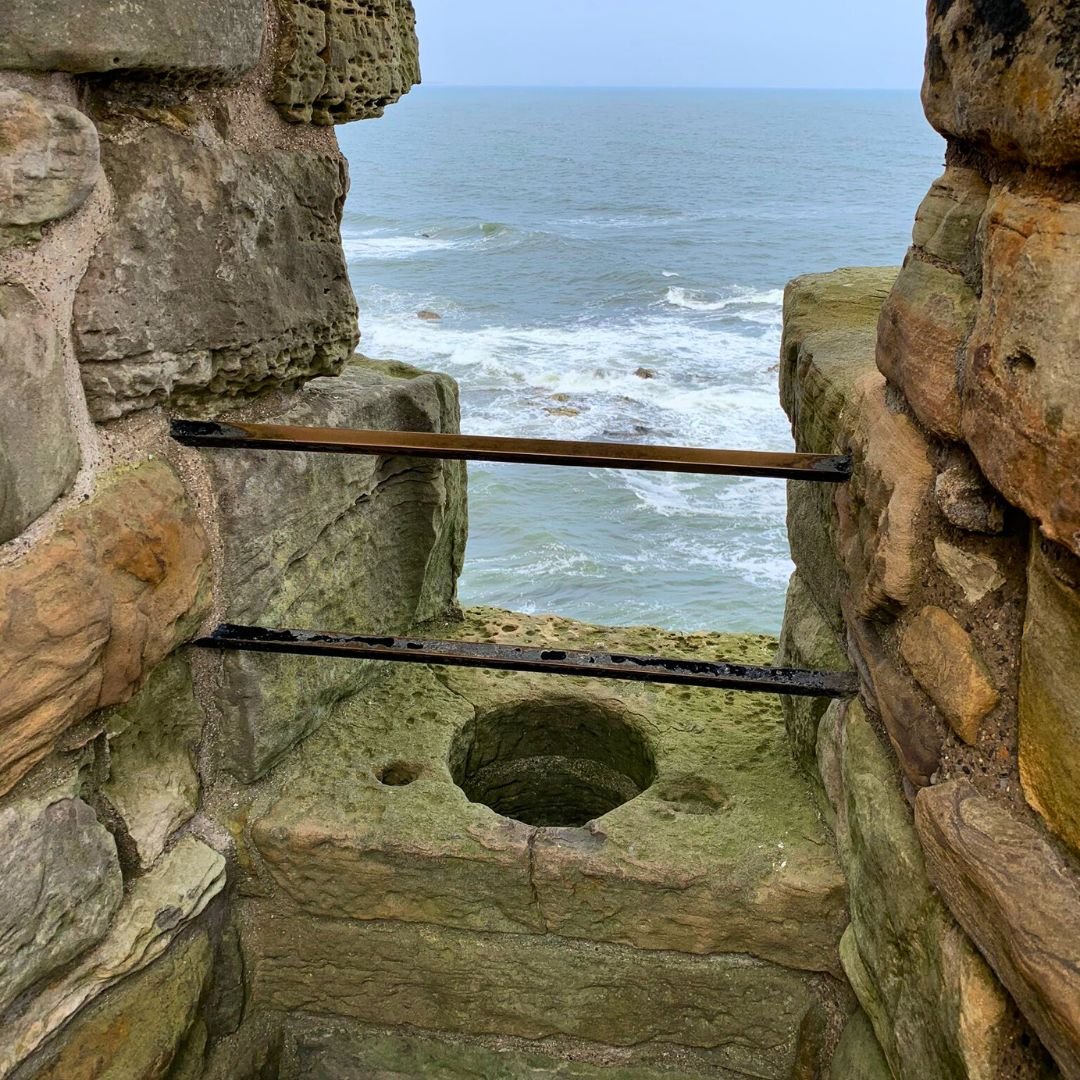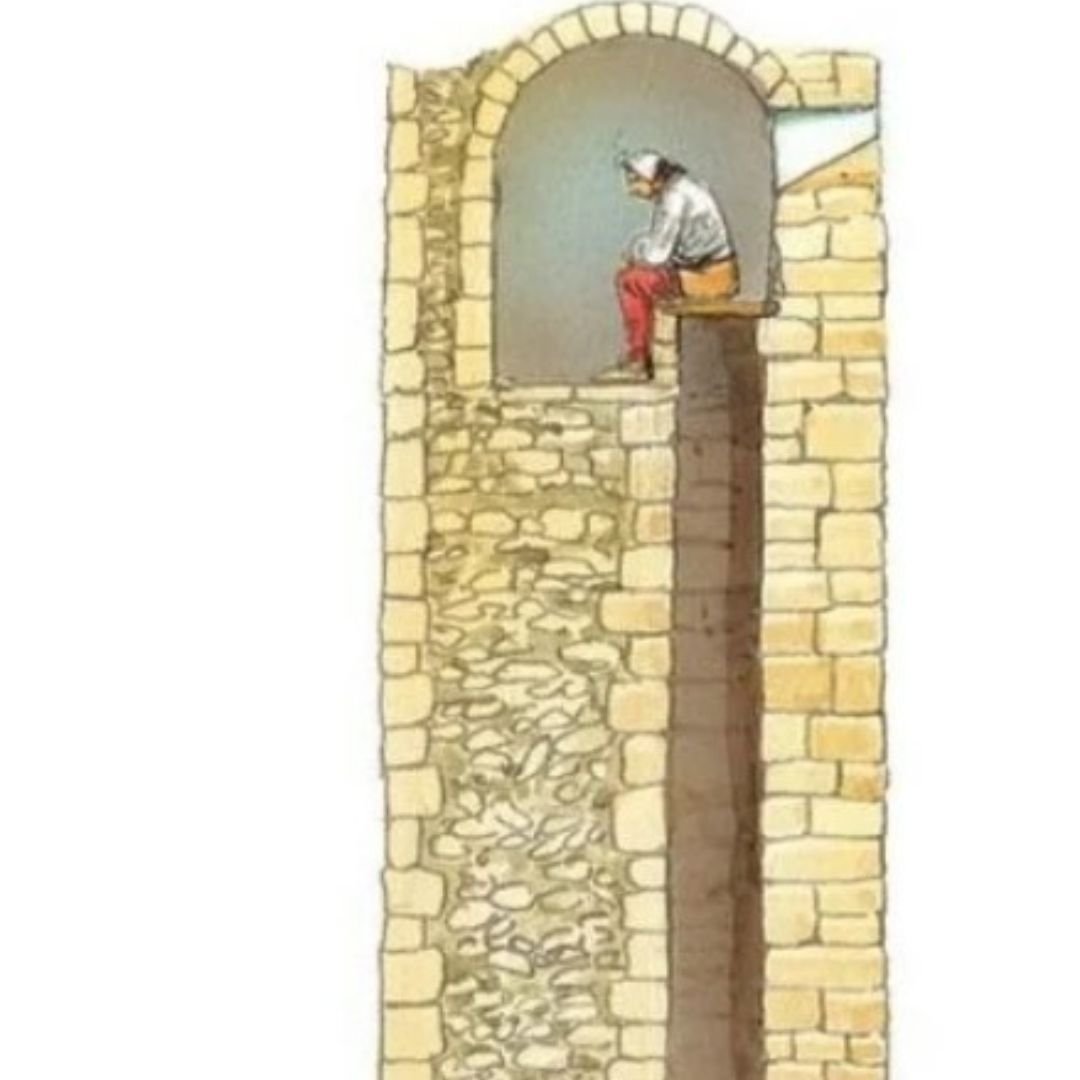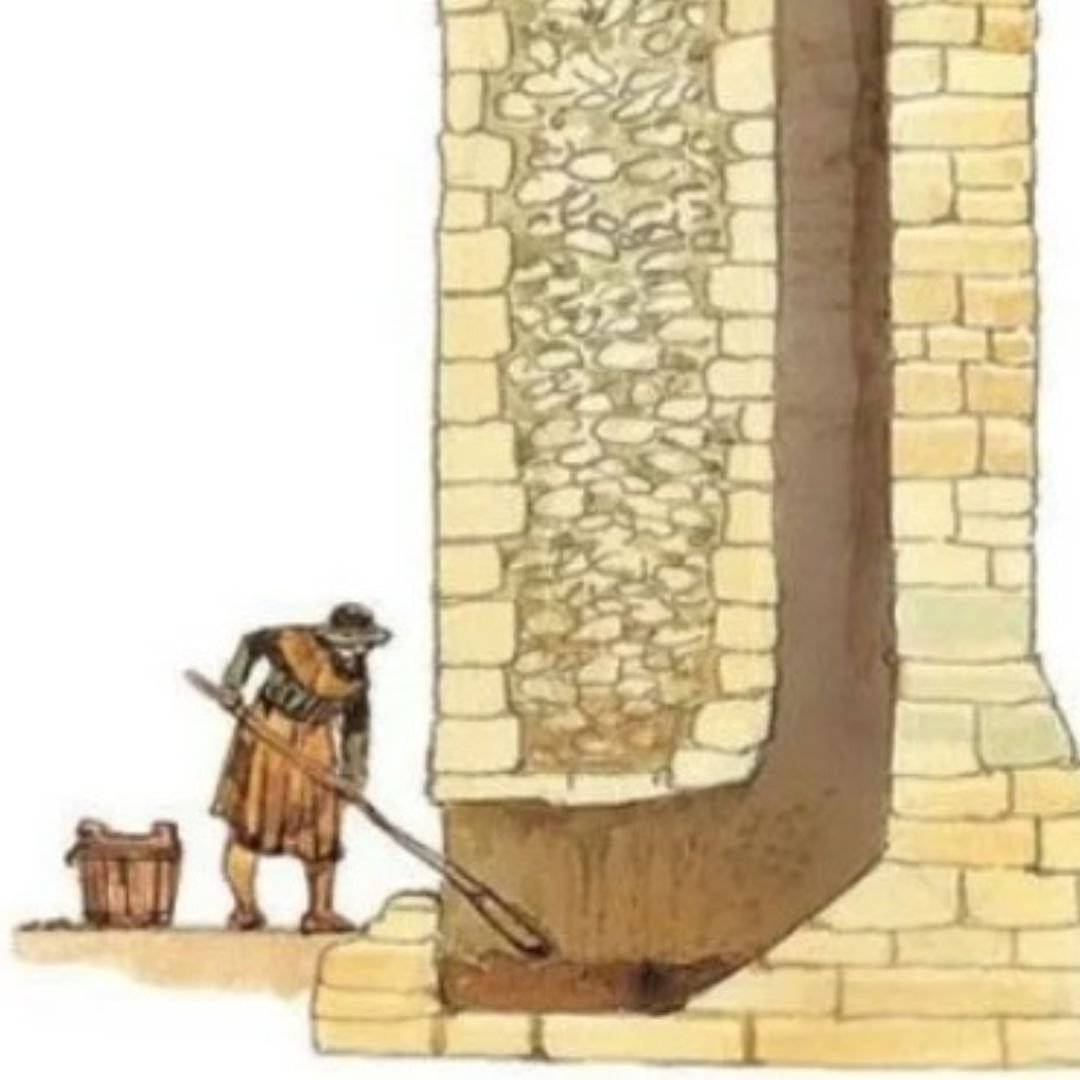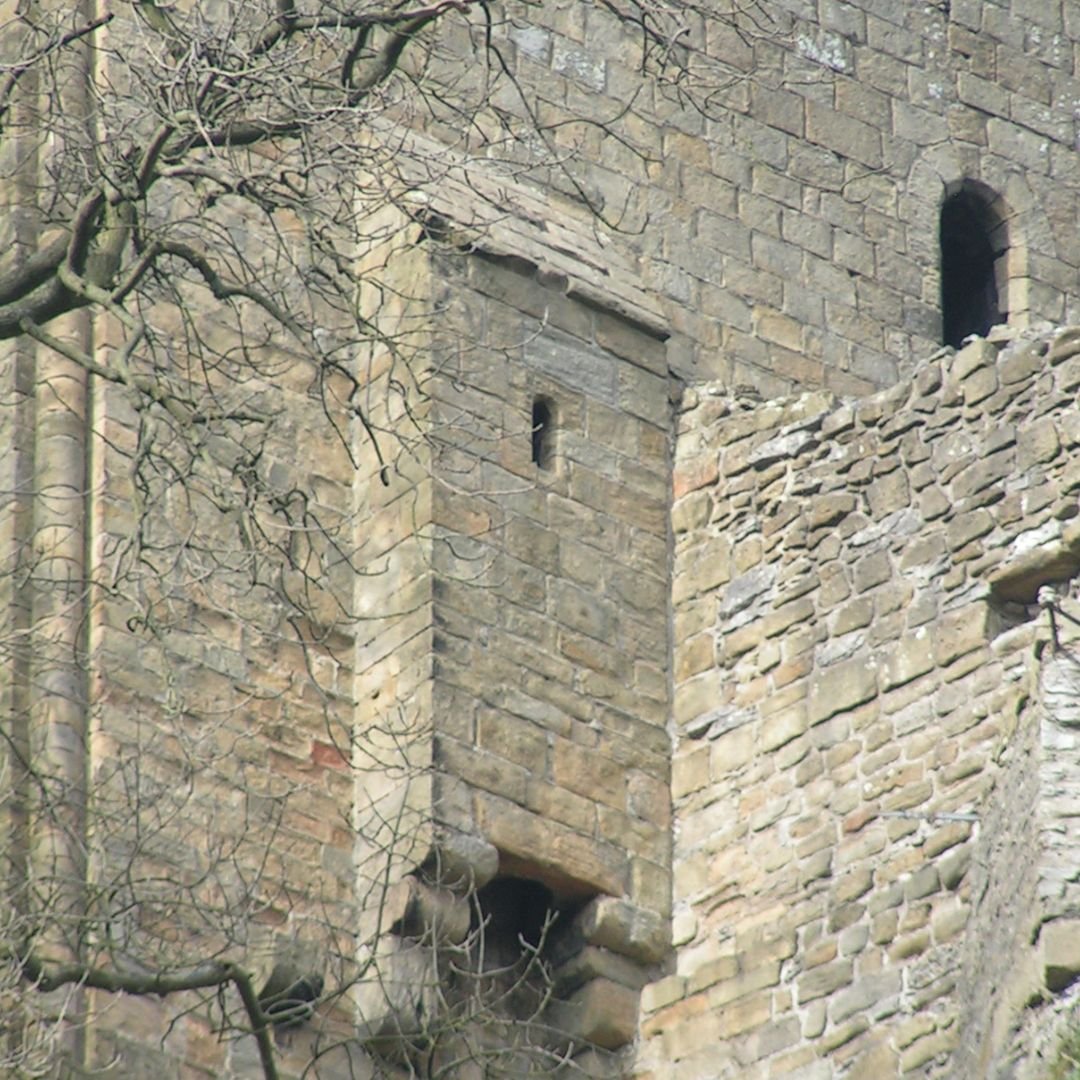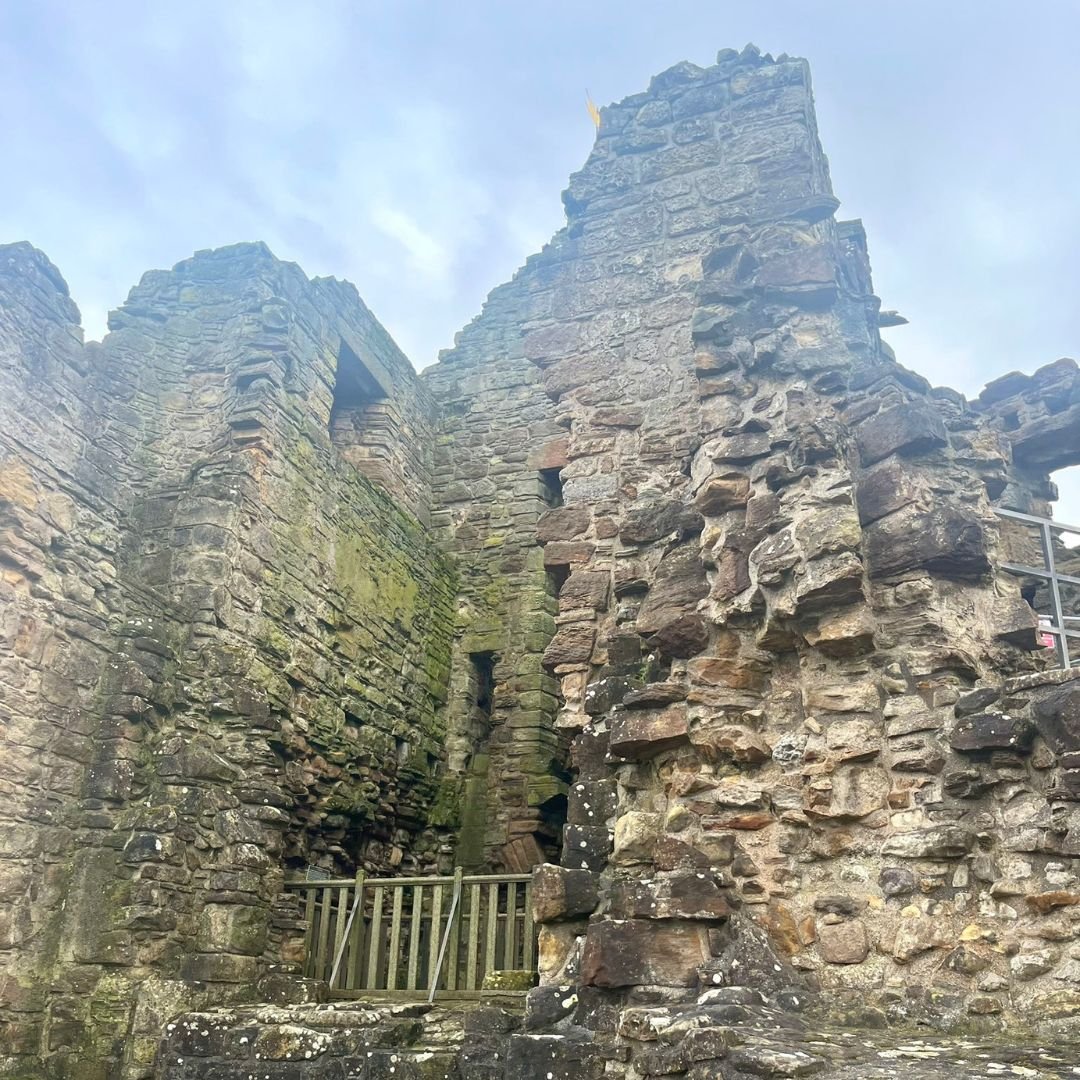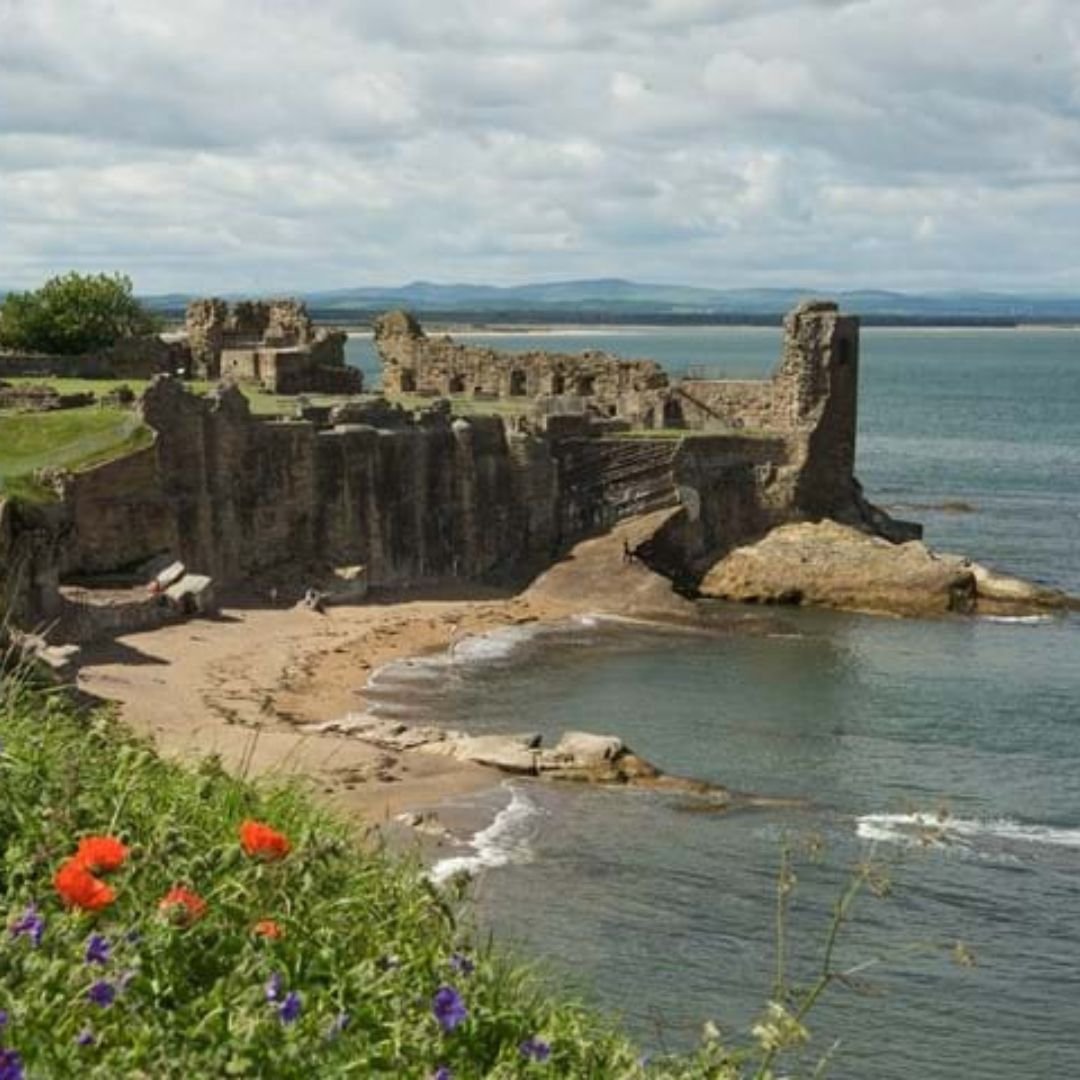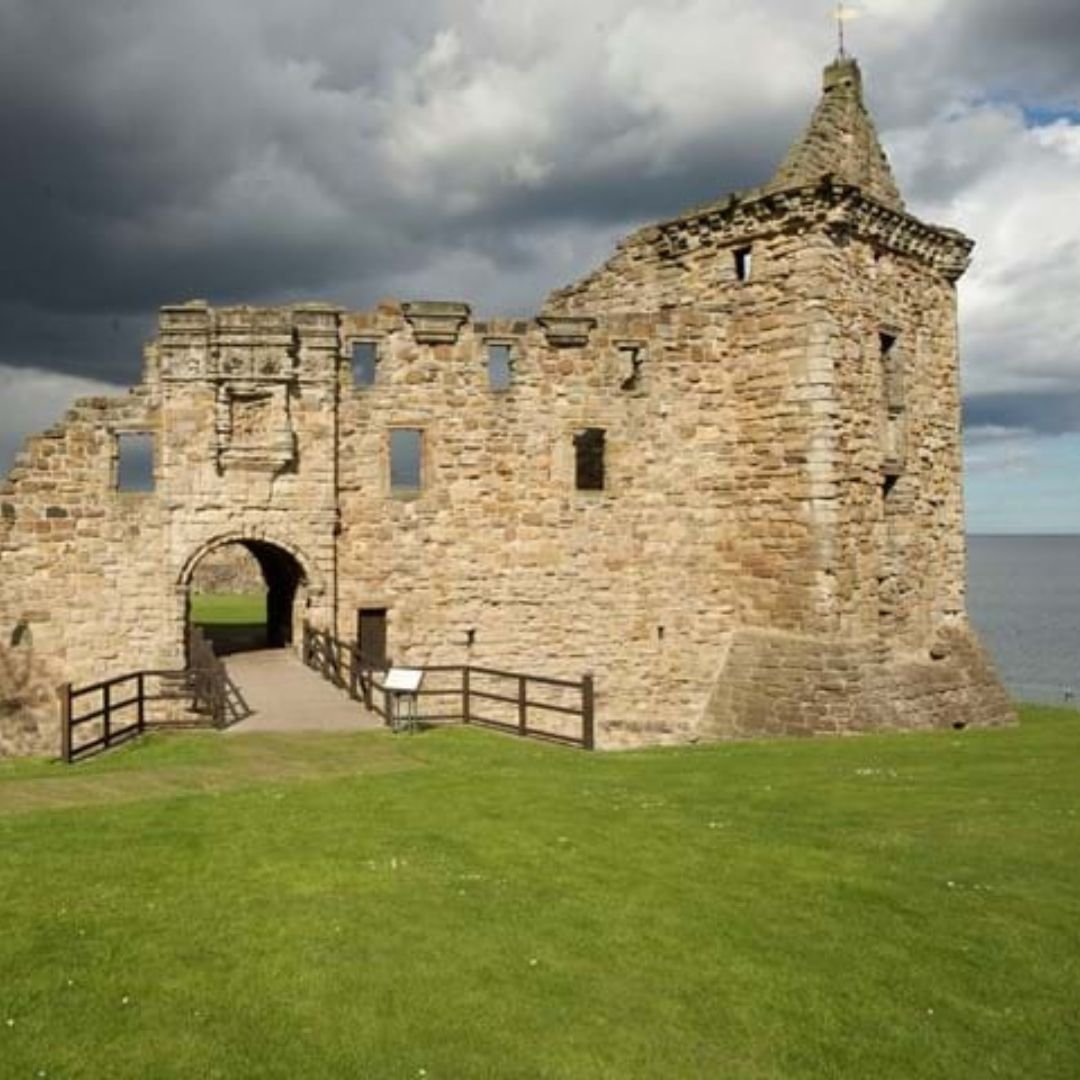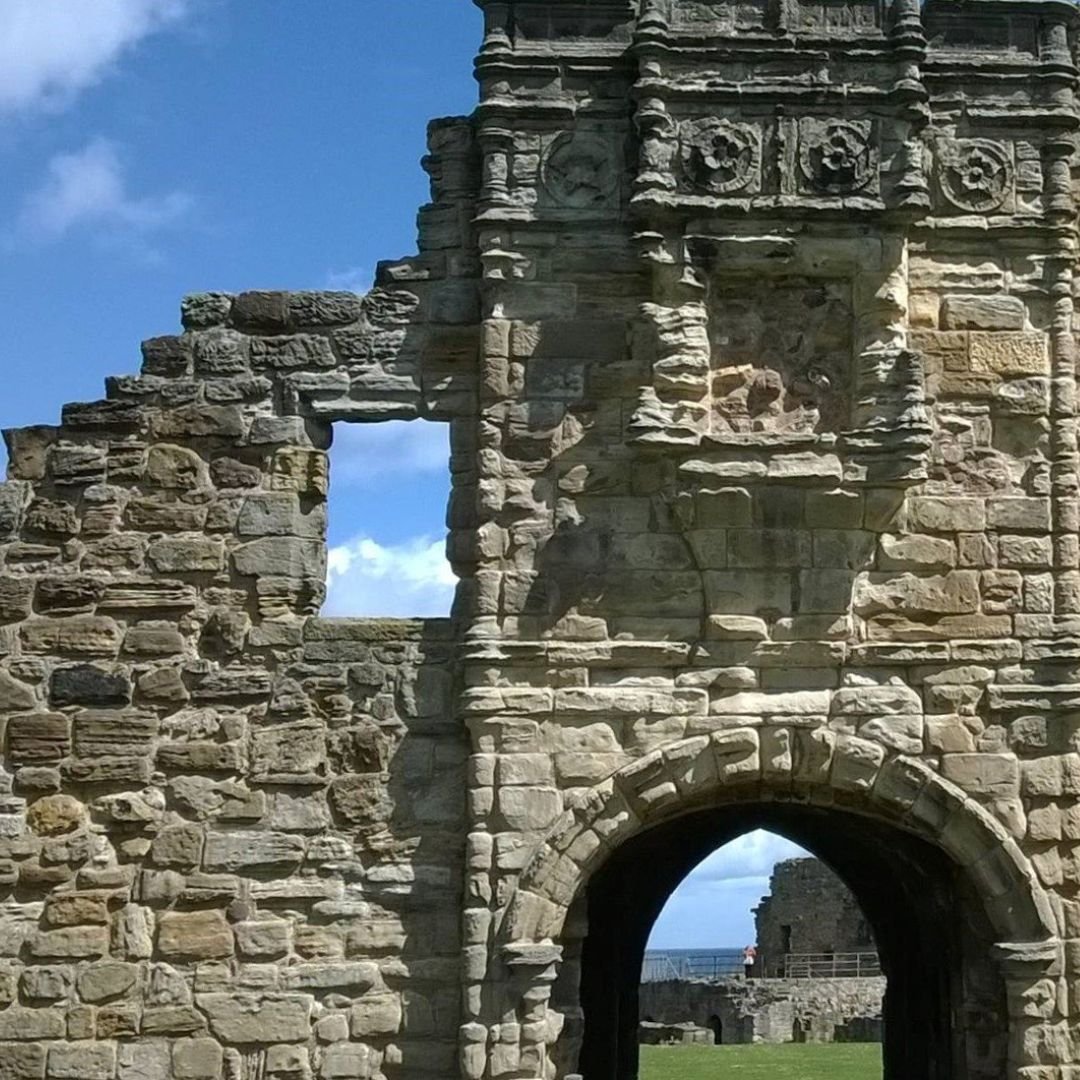13th Century Toilet, St Andrews Castle In Scotland
This 13th century toilet at St Andrews Castle, Scotland emptied directly down the cliff and into the sea.
Nothing stopped the wind from whistling up through the stone seat, and it's quite a windy place, too!
’Garderobe’ is a historic term for a room in a medieval castle.
A garderobe was often a small, windowless room nestled within the castle's thick stone walls, and it served as a multi-functional space.
Its primary function? To provide castle inhabitants with a convenient place to answer nature's call.
Step into a medieval garderobe and you'd find a simple stone or wooden bench with a strategically placed hole.
This crude seating arrangement was designed for practicality rather than comfort.
A vertical shaft or chute extended beneath the bench, guiding waste downward to a designated area.
Ideally, of course, waste would simply fall into a river or sea where no one had to deal with it, and so some castle toilets were built jutting out over a steep cliff.
Without that luxury, there had to be someone tending to the excrement, removing it, or making sure it was properly mixed with the surrounding moat.
In Tudor England, this job was known as a gong farmer, and these unfortunate souls had to work only at night so others couldn’t be put off by their grisly job.
Though they were forced to live in isolated homes, they reportedly received decent pay per ton of excrement that they removed.
Privacy, or the Lack Thereof Privacy, as we know it today, was a luxury seldom afforded in medieval times.
Garderobes were often shared among castle inhabitants or located within arm's reach of living quarters.
These structures were sometimes fashioned into the thickness of the walls, creating a sort of "privy closet" accessible from adjacent rooms.
A Challenge Beyond Castle Walls Without the luxury of running water, maintaining personal hygiene posed a considerable challenge.
Toilet paper, as we understand it, was a distant dream.
Instead, medieval denizens resorted to using whatever was at hand – be it rags, moss, or even hay.
The absence of handwashing practices as we know them today further underscores the stark contrast between medieval and contemporary hygiene norms.
The toilet was cleaned either by a simple bucket of water thrown down the shaft or by diverting the wastewater from the kitchen sinks.
More rarely, rainwater was diverted from gutters above the latrine which might also be collected into a cistern and then periodically opened to flush the toilet shaft.
Despite these refinements, there can be no doubt that a castle toilet stank to high heaven.
Indeed, it was not uncommon to hang clothing near garderobes as the pungent ammonia fumes helped to kill mites.
Henry III of England famously made mention of the problem of unsavoury odours in a letter to one of his castle constables, ordering a no-expense-spared refit of the amenities of the Tower of London.
St Andrews Castle
St Andrews Castle was initially built for the Bishops and Archbishops of St Andrews in the 13th century.
Since then, it has suffered from sieges, storm damage and bombardments by French ships, so now there isn't a lot left standing.
Some key moments leading up to the Protestant Reformation in 1560 took place inside the castle walls.
These include:
Burning of the Protestant preacher George Wishart
Murder of the Catholic Cardinal David Beaton
Great siege of 1546–7, when the church reformer John Knox was one of the garrison
St Andrews Castle suffered significant damage during the Wars of Independence with England (1296–1356).
It had to be substantially rebuilt by Bishop Walter Trail (1385–1401).
The bishops of St Andrews gained overarching responsibility for the Scottish Church in the later medieval period.
Religious tensions grew in the early 16th century, leading to more building works.
Archbishop James Beaton (1521–39) built new gun towers to strengthen the castle’s defences, which were soon put to the test by his nephew and successor.
Cardinal David Beaton (1539–46) strongly opposed the progressive move towards closer political ties with Henry VIII’s Protestant England.
He had Protestant preacher George Wishart burned in front of the castle. In response, a group of Protestant nobles occupied the castle and assassinated Beaton.
The siege that followed, led by the Regent Arran, caused extensive damage.
It also resulted in the creation of the castle’s most remarkable features – the mine, dug by Regent Arran’s troops, and countermine, dug by the Protestant rebels.
These underground passages of medieval siege warfare are unique.
Decline and ruin
Archbishop John Hamilton (1546–71) repaired the badly damaged castle, giving it a new entrance front.
The ornate Hamilton Façade is in stark contrast to the defences built by previous residents. It reflects Hamilton’s wealth and power as well as changes in architectural styles.
But Hamilton’s tenure was brought to an early end, because he opposed the Reformation. He was eventually hanged.
St Andrews Castle was left without a resident or a purpose when bishops were abolished in 1592. It fell rapidly into ruin.
In 1801, the Great Hall collapsed and most of it plunged into the sea. There were further losses until a sea wall was built in 1886.
Today, the lovely castle is now open to the public - and the reviews on TripAdvisor are great!
One recent customer said: “Of the castles I visited on this trip, St. Andrew's was by far my favorite!
”The ruins have been such for hundreds of years as erosion is taking that side of the cliff and even four hundred years ago people decided it wasn't worth rebuilding.
”As the tide was rising, you can even see foundations for additional outbuildings in the ocean that are no longer.
”The mines below ground were also fascinating and an aspect of castle siege I had not yet run into elsewhere. Very cool addition to the experience.
”The audio narration was the best on offer imo between Stirling, Edinburgh & St. Andrews. There were far fewer visitors here which very likely added to my enjoyment.”
Another person added: “Great day, kids loved the underground tunnel, and the iron monger teaching them about the tools and the old ways. Staff in shop also really informative and helpful.”
You can tour through the castle with their audio guide using your own mobile phone with internet access or one of our devices - included in ticket price.
Tickets can be purchased in advance via the Historic Environment Scotland website.
If you’d like to visit, the address is: The Scores, St Andrews KY16 9AR.
If you enjoyed this blog post, please follow Exploring GB on Facebook for daily travel content and inspiration.
Don’t forget to check out our latest blog posts below!
Thank you for visiting Exploring GB.

